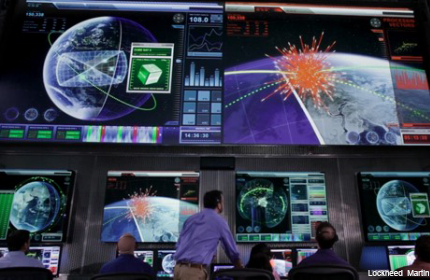Air Force awards deal for Space Fence to track orbital debris
Lockheed Martin wins the $914.7 million contract to build a system to track even small bits of space junk.

The Air Force has awarded a $914.7 million contract to Lockheed Martin to build its Space Fence program, an attempt to avoid collisions in space by more accurately tracking even small bits of space junk orbiting the Earth.
The contract awards Lockheed Martin Mission Systems and Training $415 million immediately for research, development, test and evaluation performed in fiscal 2013 and 2014, and will pay out the rest over a 52-month period, with a goal of reaching operational capability in late 2018.
Space Fence will replace the Air Force Space Surveillance System, which has been around since 1961 and could track about 20,000 objects before being shut down last year. Space Fence will expand that to 100,000 or more by using three strategically placed ground radars — the first one to be located on Kwajalein Atoll of the Marshall Islands, near the Equator — operating in the S band, which has shorter, more accurate frequencies than AFSSS used. The radars will cover enough continuous area to effectively create a “fence” through which orbiting objects will pass, according to the Air Force.
The program has been in the works since 2009, when the Air Force awarded three concept development contracts. Lockheed, Raytheon and Northrop Grumman all submitted designs, and the Air Force originally planned to award a contract in 2012, with operational capability set for 2015. Meanwhile, as those targets got pushed back by further development, the Air Force announced last August that it planned to shut down AFSSS due to sequestration cuts.
Space junk is a big worry for the Air Force, NASA and any agency that relies on satellite communications. NASA estimates that there are 500,000 objects in orbit, ranging from full-size satellites to pieces of debris about a centimeter in size. But traveling at speeds of up to 17,500 mph, even a tiny piece of debris can cause damage to a working satellite.
Keeping track of that debris — what’s called Space Situational Awareness — can help the Air Force and other organizations avoid disasters such as the big crash in February 2009, when a U.S. Iridium satellite collided with a Russian Cosmos satellite. In an example of the risk from debris, in early 2013, a working Russian spacecraft was hit by debris from a Chinese craft that had been destroyed in one of China’s anti-satellite demonstrations. And a couple months after that, NASA reported a near miss between its Fermi Gamma-ray Space Telescope and a defunct Russian satellite.
Space Fence will track objects in low- and medium-Earth orbits. For higher, geostationary objects, the Air Force in 2013 launched the Space-Based Space Surveillance system, which operates in low-Earth orbit at around 390 miles, and tracks objects 22,236 miles up. Early this year, the Air Force and Boeing, which built SBSS, said the system had reduced the risk to satellites by 66 percent.
laser systemsolar sailNEXT STORY: Cardillo to replace Letitia Long as head of NGA



